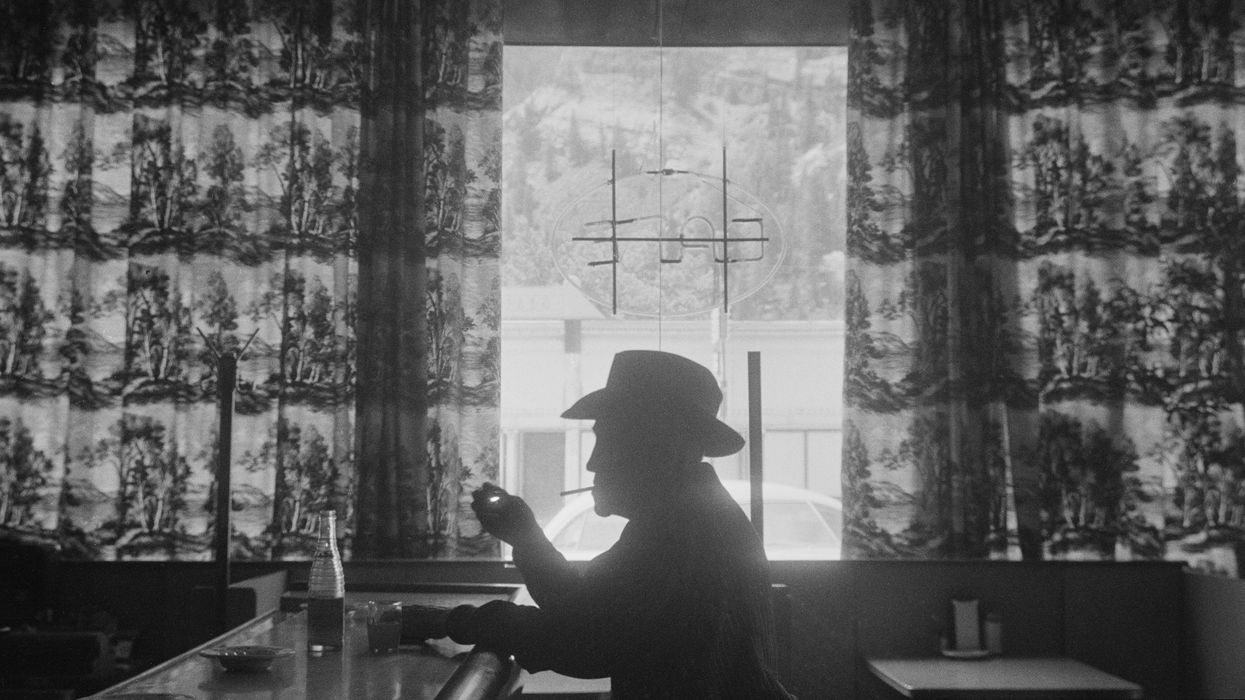Two Award-Winning Photographers Capture ‘Vanishing Americana’ in New MFAH Show

Todd Webb's 1995 photo 'Diner, Ouray, CO'
AMERICA. 1955. TWO photographers, Robert Frank and Todd Webb, each an innovator in their field, are awarded grants by the John Simon Guggenheim Foundation to travel across the country and capture “vanishing Americana, and the way of life that is taking its place.” For the first time, Frank and Webb’s photographs for that ambitious project can be seen together in Robert Frank and Todd Webb: Across America, 1955, on view through Jan. 7, 2024, at the Museum of Fine Arts, Houston. While many of Frank’s photographs will be familiar to viewers, especially those published in his 1957 book, The Americans, Webb’s images for the 1955 project have never been shown before.
Diners, automobiles and American flags recur in both Frank’s and Webb’s photos, subject matter that, at the time, was new to so-called fine photography. (Interestingly, Jasper Johns began his encaustic paintings of American flags in 1954.) The flag appears in one of Frank’s most famous images, “Parade, Hoboken, New Jersey,” in which two people in two separate windows, each nearly swallowed in darkness and one with their head obscured by the lower edge of an American flag, observe what we assume is some sort of patriotic demonstration moving past their brick building. Frank viewed his subjects with a critical eye, but never not without empathy, lest we forget that these two faceless strangers are our neighbors.

Robert Frank's 'Rodeo, New York City, 1955'

Webb's 'Cowboy, Lexington, NE'

Frank's 'Parade, Hoboken, NJ'
Among the 100 black-and-white photos in the show, a select number are hung side-by-side, revealing a synchronistic kinship between Frank and Webb, despite their differences in technique. A child of the bebop era, Frank embraced improvisation, and often shot from the hip to capture a fleeting moment in time.
Webb, on the other hand, took a more compositional approach, and many of his photos have an eerily quiet quality, like a still-life painting. His photo “Wrecked Car Lot, Stoystown, PA,” also known as “Auto Graveyard,” is a receding, apocalyptic landscape of broken down, driverless cars, scrunched together like a jigsaw puzzle of metal, glass, and rubber. Meanwhile, Frank’s “Assembly Line, Detroit” is an intensely claustrophobic shot of workers inside an auto assembly plant, their movements blurred as they struggle to keep up the pace and meet the demands of America’s post-war, consumer-based economy. (For the duration of the project, the automobile was Frank’s preferred mode of transportation, while Webb traveled from New York to San Francisco on foot, bike, and boat.)
Another inspired pairing is Webb’s “Clifton Ray Durham, Shawneetown,” a portrait of a young man looking older than his years, seated by the Ohio River, with the burning ash of a cigarette visible between his fingers. Next to it is Frank’s “New York City,” where a tough young woman with a pompadour looks over her shoulder to shoot a “Don’t mess with me!” look at the viewer. (Webb took down the names and addresses of his subjects so he could stay in touch, whereas Frank often had to click and skedaddle to avoid a bloody nose or worse.)
If the mission of the 1955 project was to document a “vanishing Americana,” contemporary viewers may wonder what has and has not vanished since that time. What can be seen in these photographs, along with the racism, economic disparity, and rabid consumerism that enraged both men, is the shared humanity of our existence, and the potential for good in all people, a light in the darkness, like the flash of a camera bulb.
- From Obama to Optical Illusions: Ambitious Spring Season Awaits at MFAH ›
- Tabled So Curators Could Add ‘Perspectives’ Following George Floyd's Murder, this Poignant Show Is Up at MFAH ›
- Sprawling New MFAH Show Illustrates the History of Transatlantic Slave Trade ›
- MFAH Installs Two Provocative Paintings in its Foyer, Presenting Them Together as a 'Portrait of Courage' ›
- A Trio of Contemporary-Cool Shows Bows at MFAH This Weekend ›






















